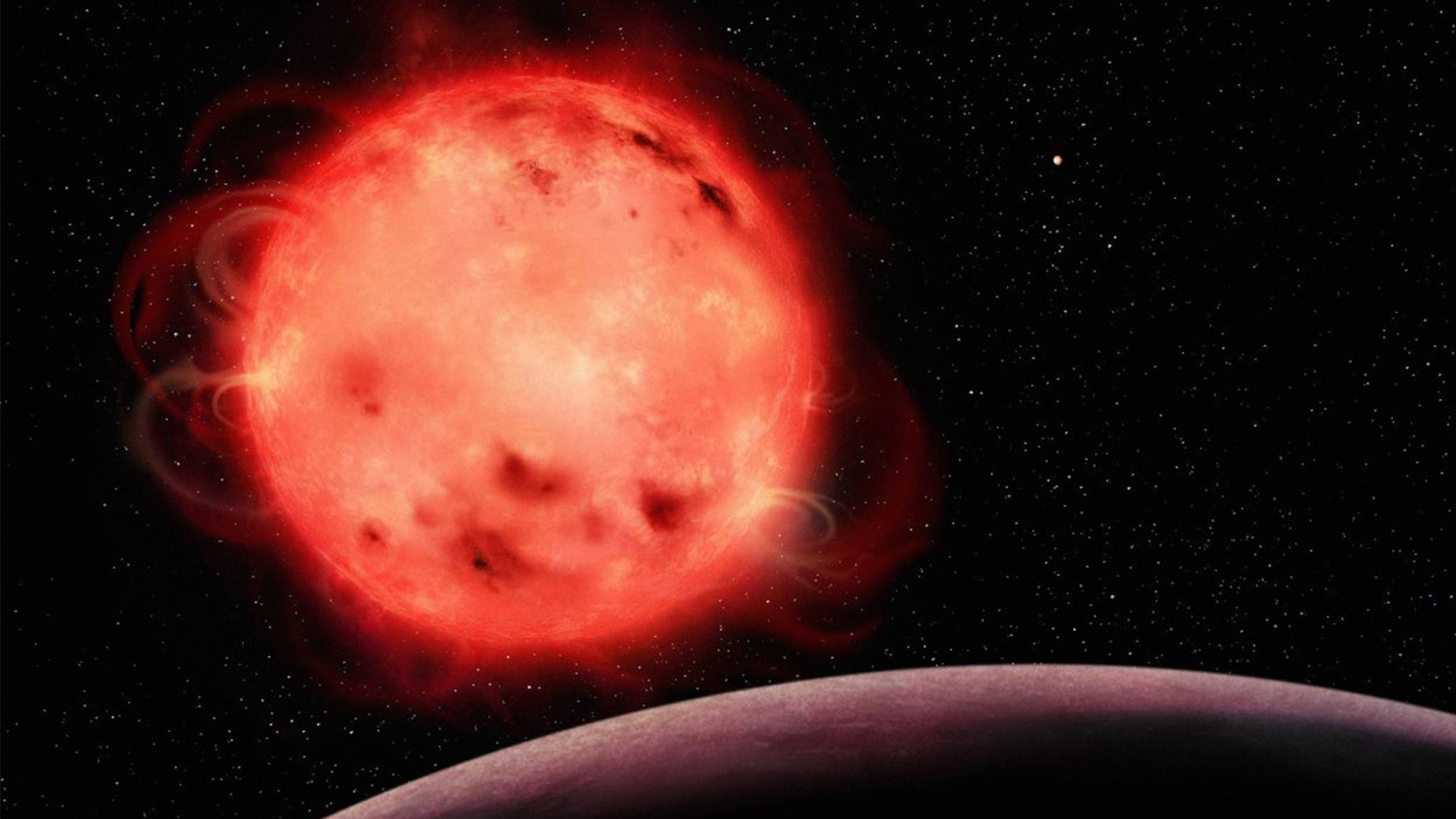

About 40 light years away, a system of seven Earth-sized planets orbit a star that is much cooler and smaller than our sun— the exoplanetary system called TRAPPIST-1. When these exoplanets were discovered in 2016, astronomers speculated that they could one day support humans. Three of those worlds are located in the star’s habitable zone, also called the “Goldilocks zone,” where the conditions for life could be “just right.” Now, astronomers using the James Webb Space Telescope (JWST) have made important progress in understanding the atmosphere of one of its potentially habitable planets.
[Related: JWST’s double take of an Earth-sized exoplanet shows it has no sky.]
JWST observations ruled out the possibilities for a clear, extended atmosphere, failing to detect elements such as hydrogen. The telescope’s new detections also cut through the interference of the star at the center of this system, avoiding what astronomers call stellar contaminations. The findings are detailed in a study published September 22 in The Astrophysical Journal Letters.
The new study specifically sheds light on the nature TRAPPIST-1 b, the exoplanet that is closest to the system’s central star. The team from institutions in the United States and Canada used the JWST’s NIRISS instrument to observe TRAPPIST-1 b during two transits, when the planet passed in front of its star.

The team used a technique called transmission spectroscopy to look deeper into the distant world. They saw the unique fingerprint left by the molecules and atoms that were found within the exoplanet’s atmosphere. “These are the very first spectroscopic observations of any TRAPPIST-1 planet obtained by the JWST, and we’ve been waiting for them for years,” study co-author and Université de Montréal doctoral student Olivia Lim said in a statement.
In the past, stars at the center of solar systems may have hampered our understanding of far-off atmospheres. That’s because these suns can create “ghost signals” which fool observers into thinking they are seeing a particular molecule in the exoplanet’s atmosphere. This phenomenon, stellar contamination, is the influence of a star’s own features on the measurements of an exoplanet’s atmosphere. A sun’s dark spots and bright faculae, or bright spots on its surface, can warp the chemical fingerprints that telescopes detect.
“In addition to the contamination from stellar spots and faculae, we saw a stellar flare, an unpredictable event during which the star looks brighter for several minutes or hours,” said Lim. “This flare affected our measurement of the amount of light blocked by the planet. Such signatures of stellar activity are difficult to model but we need to account for them to ensure that we interpret the data correctly.”
The team also used the observations to explore a range of atmospheric models for TRAPPIST-1 b. They ruled out the existence of cloud-free, hydrogen-rich atmospheres, which means that TRAPPIST-1 b likely does not have a clear and extended atmosphere around it. However, the data could not confidently rule out the possibility of a thinner atmosphere, perhaps made up of pure water, carbon dioxide, or methane.
[Related: The James Webb Space Telescope just identified its first exoplanet.]
According to the team, this result underscores the importance of taking stellar contamination into account when planning future observations of all exoplanetary systems. This consideration is especially true for systems like TRAPPIST-1, because the system is centered around a red dwarf star which can be particularly active with frequent flare events and dark spots.
More observations will be needed to determine exactly what kind of atmosphere is surrounding this exoplanet and if it could support human life. “This is just a small subset of many more observations of this unique planetary system yet to come and to be analyzed,” study co-author and Université de Montréal astronomer René Doyon said in a statement. “These first observations highlight the power of NIRISS and the JWST in general to probe the thin atmospheres around rocky planets.”
